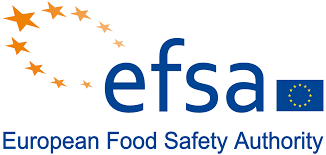Chemycal has been acquired by 3E
Learn MoreChemycal has been acquired by 3E
Learn MoreDiscover how Chemycal PRO helps you boosting your regulatory monitoring:

The Minutes of the 19th Meeting of the Working Group on Food Contact Materials include the following scientific topics for discussion:
(*) There were no FCM applications for discussion.
Additional information was foreseen to be received for several FCM-applications, but the applicants informed EFSA that they encountered a delay in obtaining the analytical data EFSA requested due to the Covid-situation. The deadline for submitting the additional information was therefore extended, and the applications remain in stop-the-clock awaiting the receipt of the additional information.
(*) Scientific Committee draft guidance on nanomaterials
The “draft EFSA Guidance on technical requirements for regulated food and feed product applications to establish the presence of small particles including nanoparticles”, for which the public consultation ended in September, was presented and discussed. The guidance follows a mandate from the European Commission (EC) addressing technical requirements for conventional materials (i.e. materials that do not meet the “engineered nanomaterials” definition of the Novel Food Regulation) in order to identify the presence of a fraction of small particles requiring assessment at the nanoscale. The Scientific Committee WG on Nanotechnology is currently addressing the comments received during the public consultation and, simultaneously, updating the SC Guidance on the risk assessment of nanomaterials published in 2018. Specific considerations for FCM are provided in an Annex of the 2018 guidance. EFSA explained the scope of both complementary guidance documents.
The “Guidance document on Technical Requirements” is only applicable to conventional materials and provides applicants and other interested parties with the information to be submitted for confirming that the material does not require assessment at the nanoscale. The scope of the SC Guidance on the risk assessment of nanomaterials under update covers both nanomaterials covered by the legal definitions and conventional materials requiring assessment at the nanoscale (i.e. those identified according to the Guidance document on Technical Requirements).
(*) Re-evaluation of phthalates
The WG was informed about the receipt of a new mandate from the EC tasking EFSA with the reevaluation of phthalates. Once the mandate is formally accepted, it will become publicly available in EFSA’s register of questions. In preparation of this opinion, the EC is requesting the collaboration with ECHA to work together, considering the screening and prioritisation exercise done by ECHA on groups of structurally similar substances that may be relevant as regards their use in FCMs.
(*) Feedback from EFSA, CEP Panel and the European Commission
In the context of the 16th amendment of Regulation (EC) 10/2011, the EC asked the FCM WG for their considerations on the SML to be set for FCM substance n. 1080 ((triethanolamine-perchlorate, sodium salt) dimer (opinion adopted by the CEP Panel on 29 April 2020) and the possible implications for adding the substance to two group restrictions (SML(T)). The EC also asked the WG for their views on the possible implications of the classification by REACH of certain cobalt salts as CMRs, as the salts of authorised acids can be used in FCM (in accordance with Article 6(3)(a) of Reg. 10/2011), subject to an SML for cobalt of 50 ppb.
1) FCM substance n. 1080 ((triethanolamine-perchlorate, sodium salt) dimer: In the context of the 16th amendment of Regulation (EC) 10/2011, FCM substance n. 1080 will need to be added to two group restrictions, for triethanolamine (FCM 793) and perchlorate (FCM 822). In the case of FCM 822, the SML was set to cover the acids and not necessarily the salts. As indicated in the EFSA opinion (2020), the SML for perchlorate is based on the health-based guidance value as set by the CONTAM Panel. The salts will instead dissociate (perchlorate and counter ions in the solution), which makes the salts obsolete in the current listed SML for FCM 822.
2) Cobalt salts: Salts of authorised acids can be used in FCM on the basis of dissociation (Article 6(3)(a) of Reg. 10/2011). Some cobalt salts have been classified under REACH as CMRs (e.g. cobalt di(acetate) is carcinogenic by inhalation). In view of the REACH classifications, is there a reason to reconsider the SML of 50 ppb for cobalt currently limiting the migration of cobalt from plastic FCM? For being able to answer this question, the FCM WG indicated that there is a need to first look at the available dataset (mechanisms of action, studies by oral exposure, etc.) to understand whether the carcinogenicity by inhalation also applies to oral exposure, as the REACH classification is based on studies on occupational exposure by inhalation. It was noted that the exposure to cobalt could come from different sources, including FCM, feed additives and contaminants.
Link to the Minutes of the 19th Meeting of the Working Group on Food Contact Materials 2018-2021
2013 © MyChemicalMonitoring. ALL Rights Reserved. About Us | Terms and Conditions